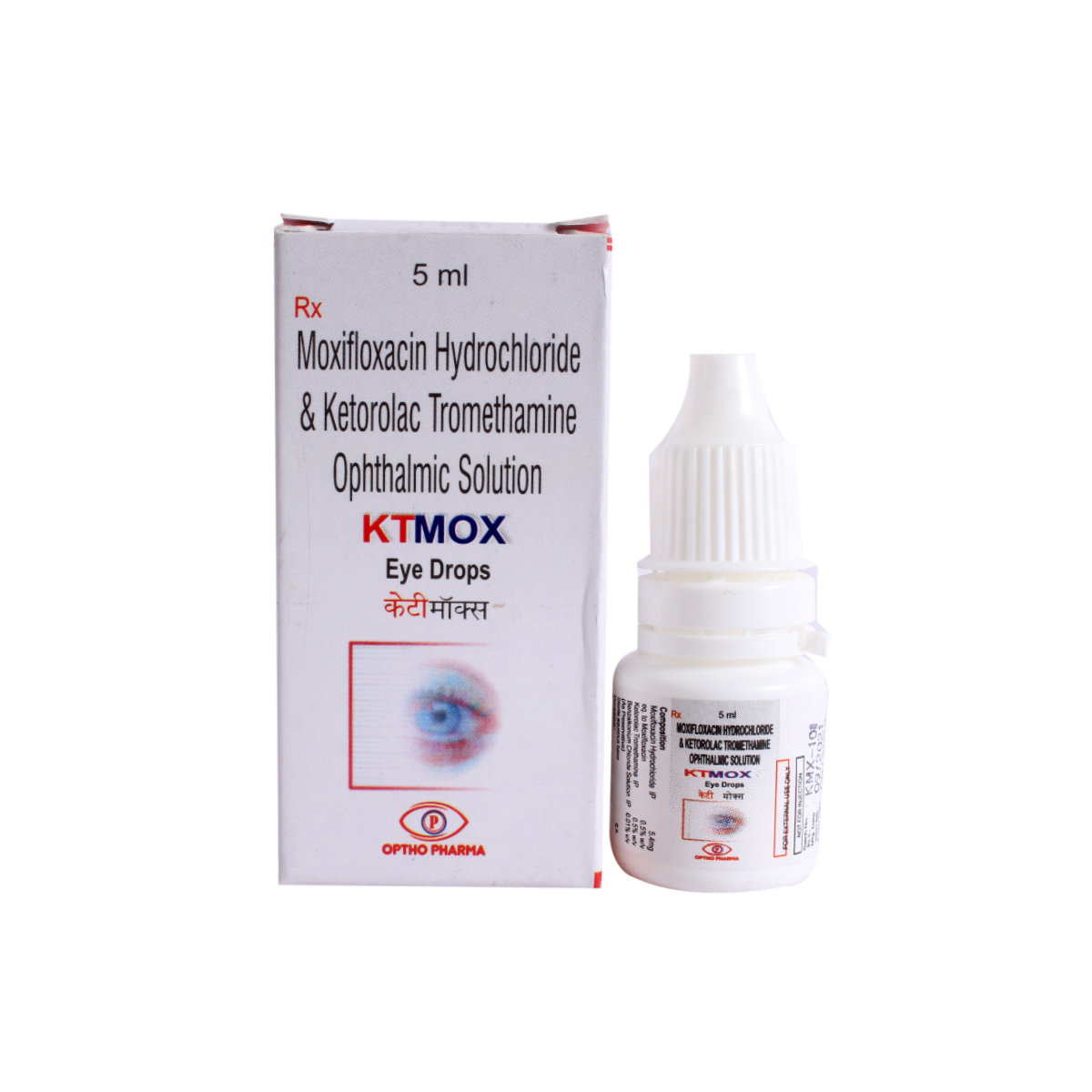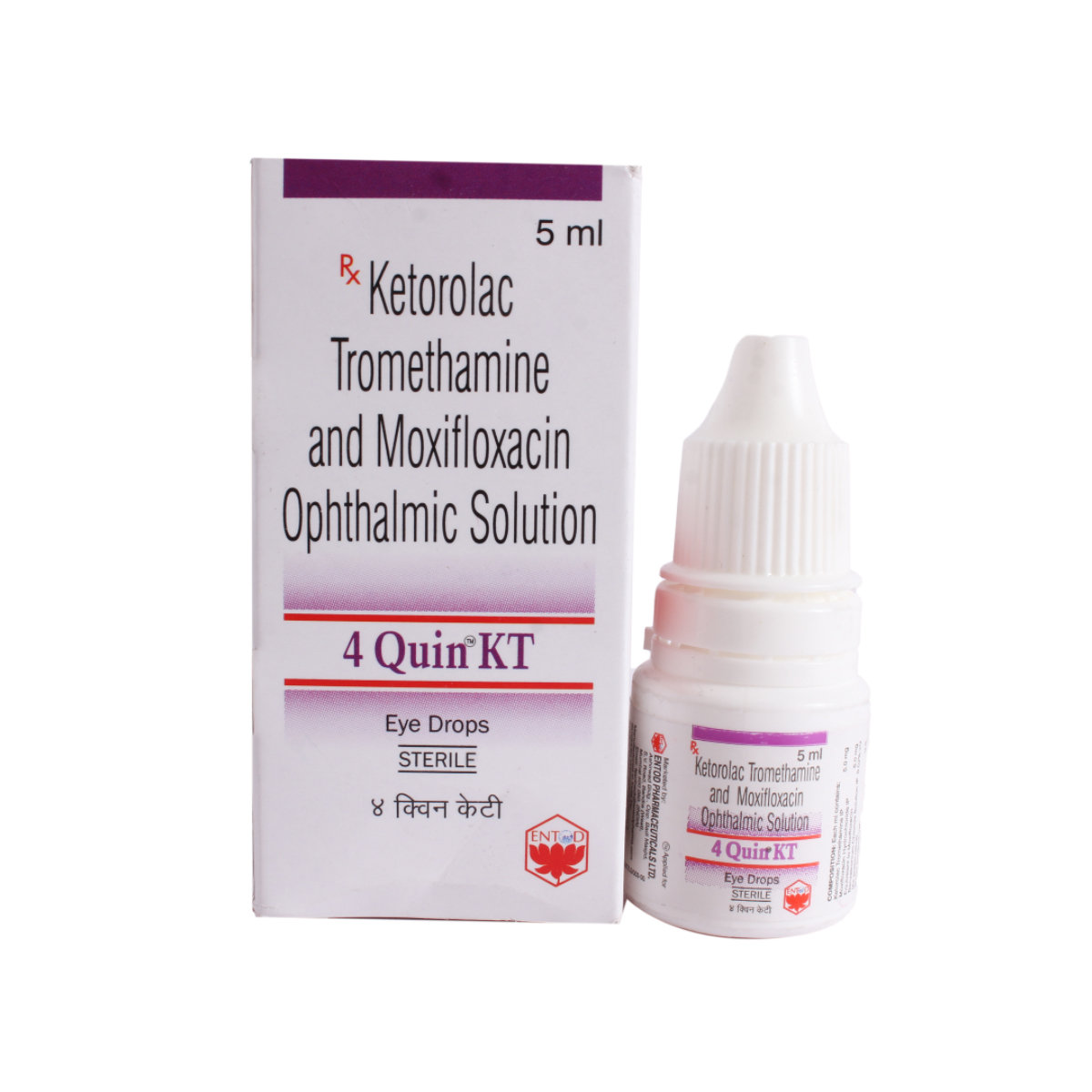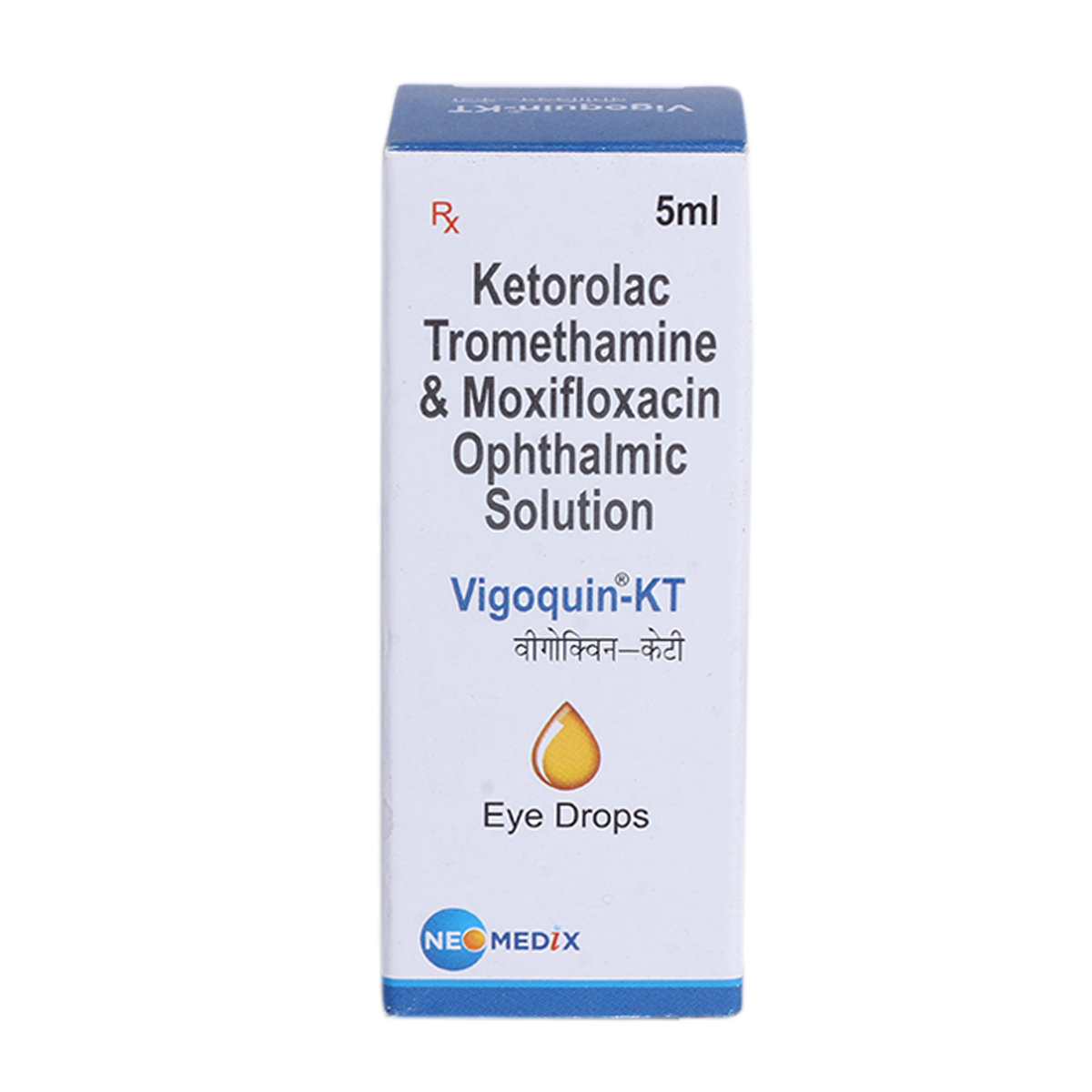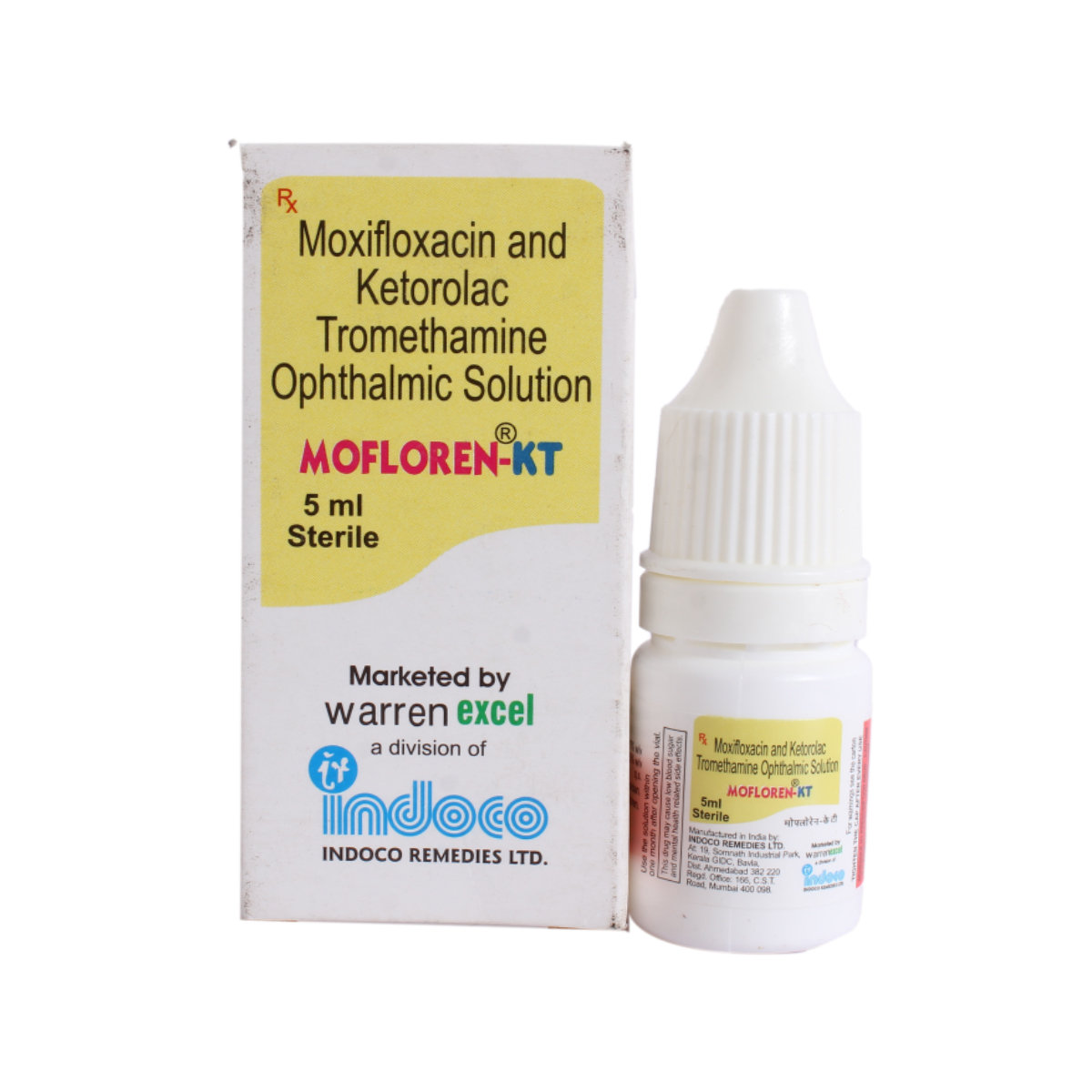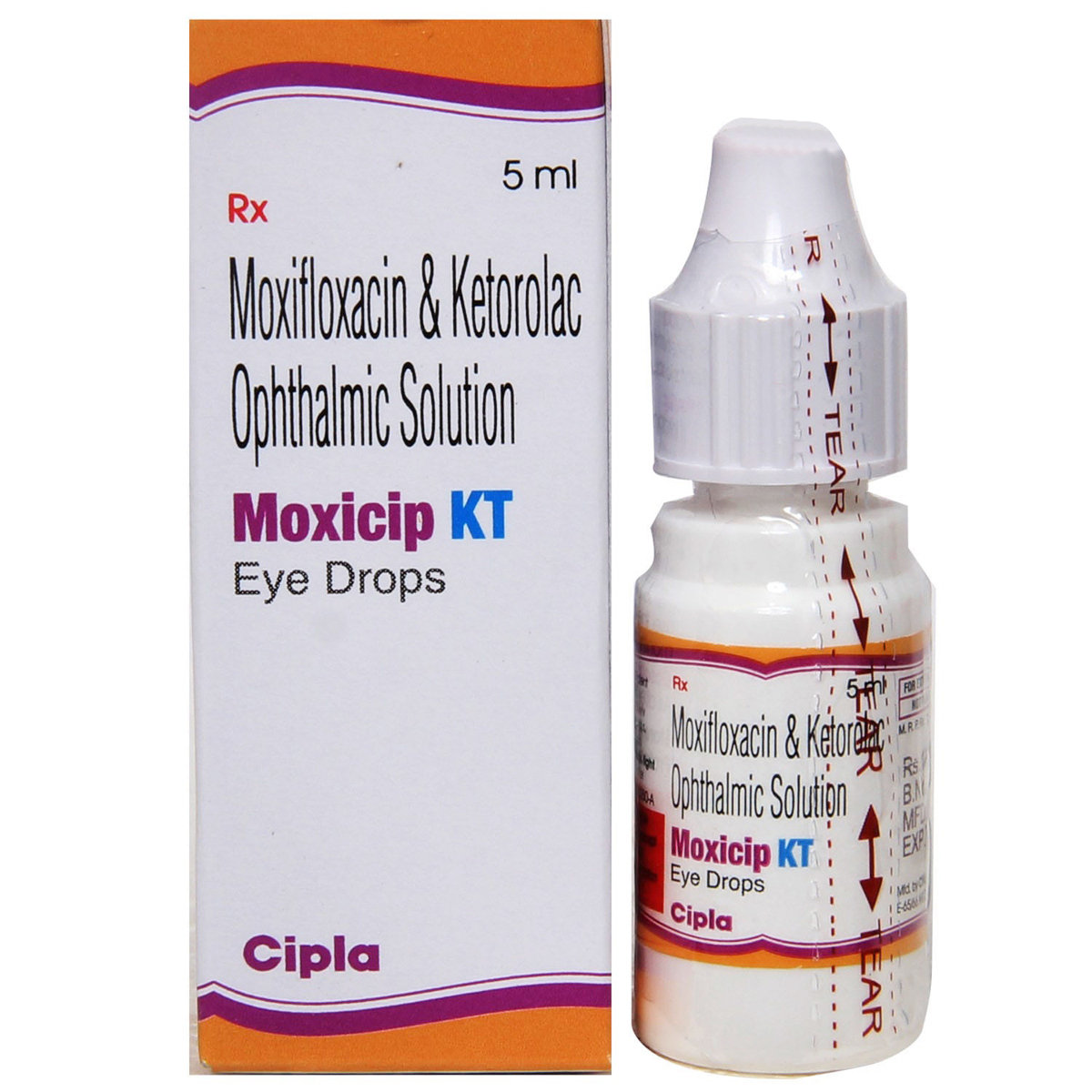Centaflox KT Eye Drop


MRP ₹107.33
(Inclusive of all Taxes)
₹16.1 Cashback (15%)
Provide Delivery Location
Online payment accepted
 Prescription drug
Prescription drugWhats That
Composition :
Manufacturer/Marketer :
Consume Type :
Return Policy :
About Centaflox KT Eye Drop
Centaflox KT Eye Drop is an ophthalmic (for eye use) medication, primarily used to treat and prevent bacterial eye infections and itchy eyes caused by seasonal allergies. Centaflox KT Eye Drop also relieves swelling, pain, and burning or stinging sensation after cataract surgery or corneal refractive surgery. A bacterial eye infection occurs when bacteria invade any part of the eyeball or its surrounding tissues, including the cornea (clear front surface of the eye) and the conjunctiva (thin membrane lining the outer eye and inner eyelids).
Centaflox KT Eye Drop contains two medicines, namely: Ketorolac (non-steroidal anti-inflammatory drug (NSAID)) and Moxifloxacin (antibiotic). Ketorolac is a non-steroidal anti-inflammatory drug. It inhibits cyclo-oxygenase (COX) enzymes that further prevent the formation of chemical messengers called 'prostaglandins' (PGs). These prostaglandins are produced at injury sites and cause pain and swelling. By blocking COX enzymes' effect, lesser PGs are produced, which reduces mild to moderate pain and inflammation at the infected site. Moxifloxacin belongs to a class of drugs called quinolone antibiotics. It is bactericidal (kills bacteria) and works by inhibiting bacterial DNA gyrase, an enzyme required for the replication, transcription and repair of the DNA.
Your doctor will advise on how often you take Centaflox KT Eye Drop based on your medical condition. Some common side effects of Centaflox KT Eye Drop include blurred vision, watery eyes, burning/stinging sensation in the eye, and eye discomfort. These side effects do not require medical attention and gradually resolve over time.
Please do not use Centaflox KT Eye Drop without consulting your doctor if you have any eye surgery, diabetes, asthma, nasal polyps, or eye problems like dry eye syndrome and corneal problems. Avoid touching the eyedropper with bare hands or taking it closer to the eyelids while administering drops since it contaminates the dropper tip and solution. Avoid driving or operating machines since the administration of Centaflox KT Eye Drop causes blurred vision for a while after using. If you are pregnant or a breastfeeding mother, please consult your doctor before using Centaflox KT Eye Drop.
Uses of Centaflox KT Eye Drop
Directions for Use
Medicinal Benefits
Centaflox KT Eye Drop treats and prevents bacterial eye infections and itchy eyes caused by seasonal allergies. It also relieves swelling, pain, and burning or stinging sensation after cataract surgery or corneal refractive surgery. It contains two medicines, namely: Ketorolac (NSAID) and Moxifloxacin (antibiotic). Ketorolac is a non-steroidal anti-inflammatory drug (NSAID). It works by blocking chemical messengers called 'prostaglandins' in your body to reduce pain and swelling. Moxifloxacin is a quinolone antibiotic. It is bactericidal (kills bacteria) and works by inhibiting bacterial DNA gyrase, an enzyme required for the replication, transcription, and repair of the DNA.
Storage
Drug Warnings
Before using the Centaflox KT Eye Drop, let your doctor know if have eye surgery, diabetes, asthma, nasal polyps, or eye problems like dry eye syndrome and corneal problems. Avoid touching the dropper with bare hands or taking it closer to the eyelids while administering drops since it contaminates the dropper tip and solution. If you wear contact lenses, remove them while administering the medicine into the eye. It is advised to check with your doctor before using Centaflox KT Eye Drop if you are pregnant or breastfeeding. Avoid driving or operating machines since the administration of Centaflox KT Eye Drop may cause temporary blurred vision for a while.
Diet & Lifestyle Advise
- Take the medication as directed by the doctor and at regular intervals. Do not use other over the counter medications, herbal or vitamin supplements without informing your pharmacist or doctor when you take Centaflox KT Eye Drop.
- Try to maintain good hygiene to keep your eyes clean and irritant-free.
- Do not rub your eyes even though some ophthalmic drugs make your eye itchy.
- Wash your hands thoroughly and do not touch the dropper before using drops to avoid contamination.
- Know your allergy triggers, such as pollen, dust and other factors.
Side Effects of Centaflox KT Eye Drop
- Blurred vision
- Burning/stinging sensation of the eye
- Watery eyes
- Eye discomfort
Habit Forming
Therapeutic Class
All Substitutes & Brand Comparisons
RX
Out of StockNot for online saleEmoxyl Eye Drop
Ethics Health Care Pvt Ltd
₹87.45
(₹7.87/ 1ml)
59% CHEAPERRX
Out of StockNot for online saleContro KT Eye Drop
Alisier Drugs Pvt Ltd
₹96
(₹17.28/ 1ml)
10% CHEAPERRX
Out of StockNot for online saleCrismox-KT Eye Drops 5 ml
MPRIS Pharmaceuticals Pvt Ltd
₹131
(₹23.58/ 1ml)
22% COSTLIER
Product Substitutes
Author Details
We provide you with authentic, trustworthy and relevant information
FAQs
Drug-Drug Interactions Checker List
- CLOPIDOGREL
- ASPIRIN
- DABIGATRAN
- ENOXAPARIN
- WARFARIN
- NAPROXEN
- IBUPROFEN
- PREDNISONE
Special Advise
It is advised to reach out to your doctor if the bacterial infection symptoms persist or worsen after two weeks of treatment.
Disease/Condition Glossary
Bacterial eye infection: A bacterial eye infection occurs when bacteria invade any part of the eyeball or its surrounding tissues, including the cornea (clear front surface of the eye) and the conjunctiva (thin membrane lining the outer eye and inner eyelids). A bacterial eye infection symptoms include red eyes, pain, swelling of the eyes, watery eyes, itching, and blurry vision. Some very common eye infections are Conjunctivitis (pink eye) and Stye.
Conjunctivitis: A condition caused by the inflammation and irritation of the eye's mucous membrane (conjunctiva).
Stye: Formation of a bump on the eyelid that happens when bacteria from the skin get into the hair follicle of an eyelash.
Allergy is an immune response produced by the body in response to 'allergens,' which release 'histamines' into the blood. Histamines are the chemicals released into the body due to this immune response and cause a stuffy nose, watery eyes, itching nose/throat etc.

Have a query?
Alcohol
Caution
There is limited information on how alcohol consumption affects Centaflox KT Eye Drop. Please consult your doctor before starting.
Pregnancy
Caution
Please consult your doctor if you are planning to become pregnant or already pregnant before starting Centaflox KT Eye Drop.
Breast Feeding
Caution
It is not known if Centaflox KT Eye Drop passes into the breast milk. Please consult your doctor before starting Centaflox KT Eye Drop if you are a lactating mother.
Driving
Caution
Centaflox KT Eye Drop may cause side effects like blurry vision, which could affect your ability to drive. Do not drive or operate machinery in such cases. Drive only when you are alert and have a clear vision.
Liver
Caution
Let your doctor know if you have any history of liver diseases. Your doctor will weigh the benefits and potential risks before prescribing Centaflox KT Eye Drop.
Kidney
Caution
Let your doctor know if you have any history of kidney diseases. Your doctor will weigh the benefits and potential risks before prescribing Centaflox KT Eye Drop.
Children
Caution
Centaflox KT Eye Drop is not recommended in children below two years of age. The dose may have to be adjusted by your doctor depending upon the condition of the children's disease and age.


